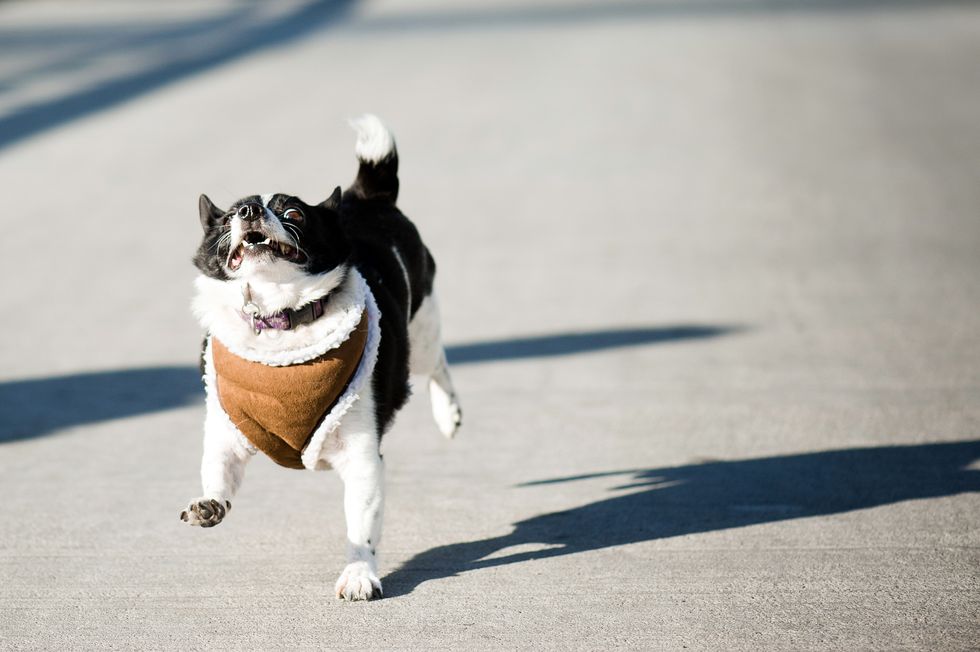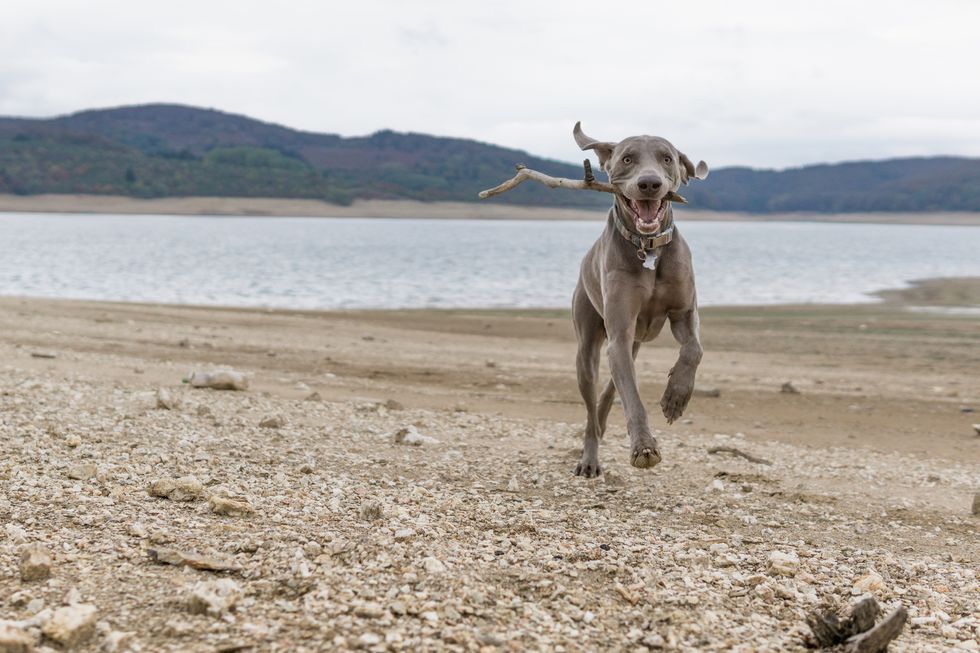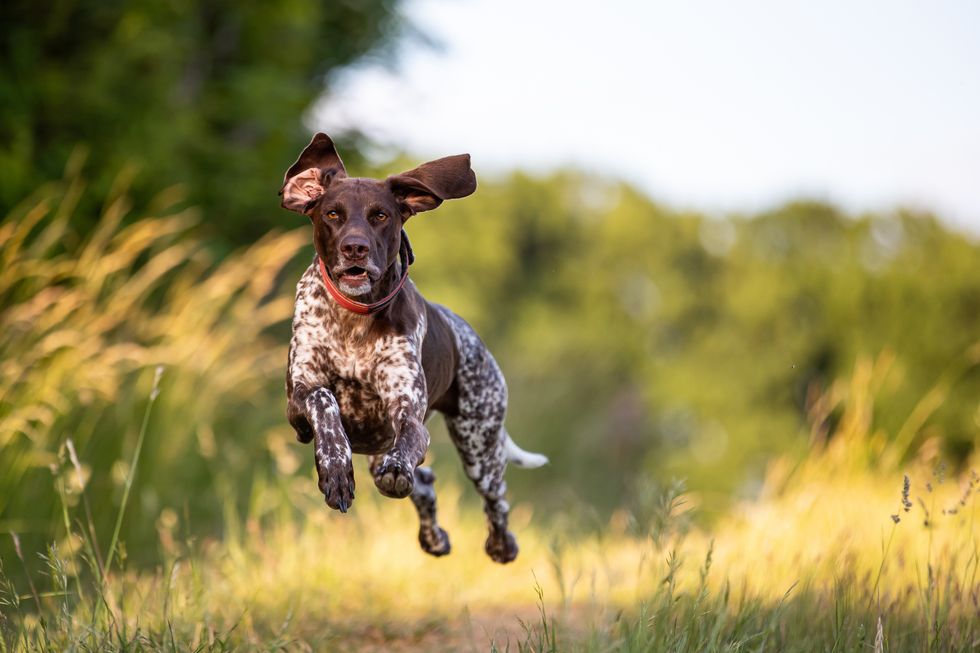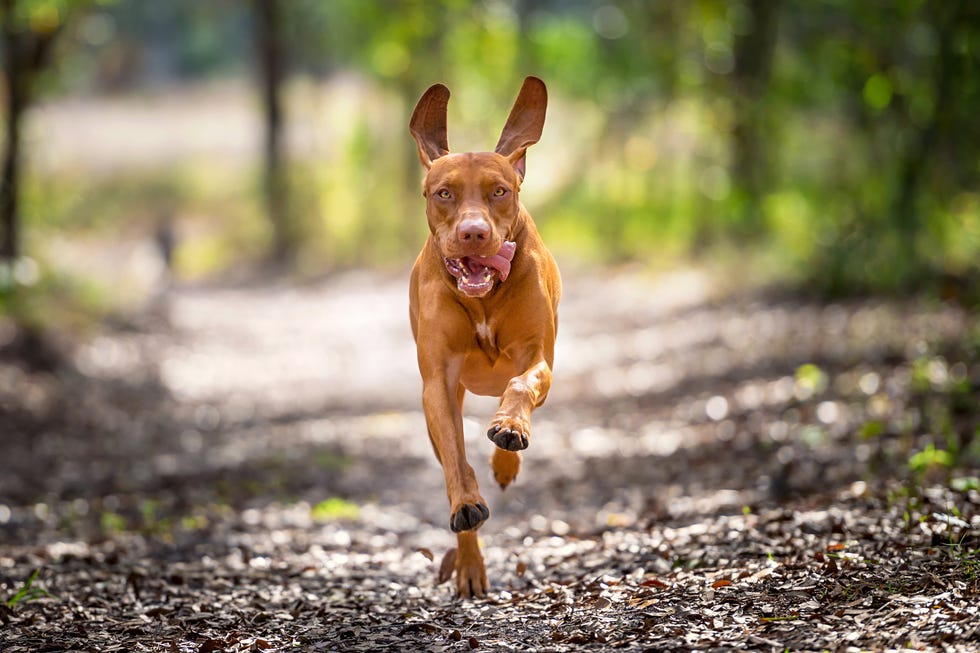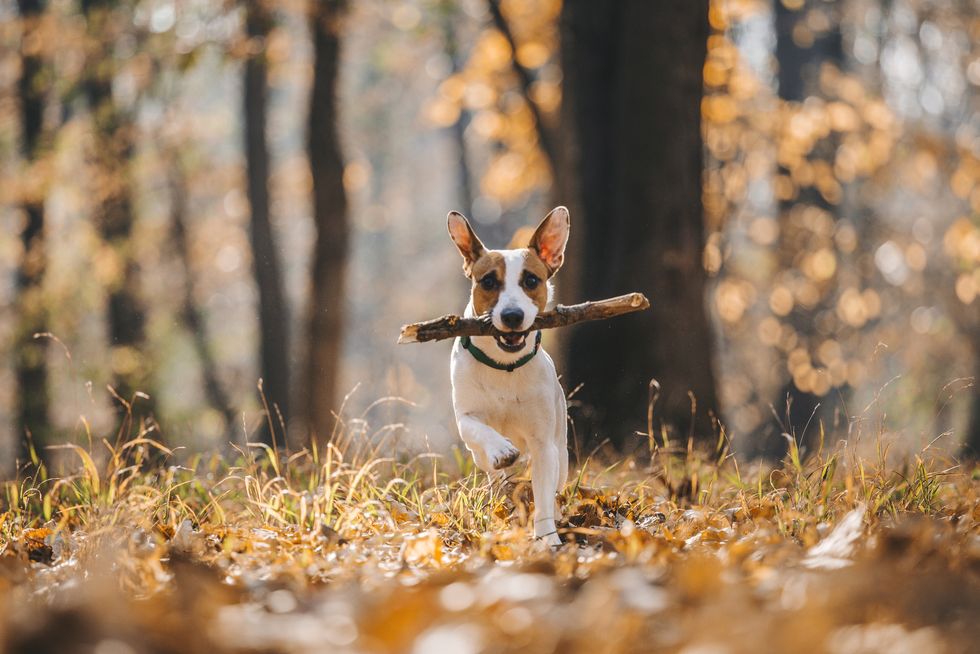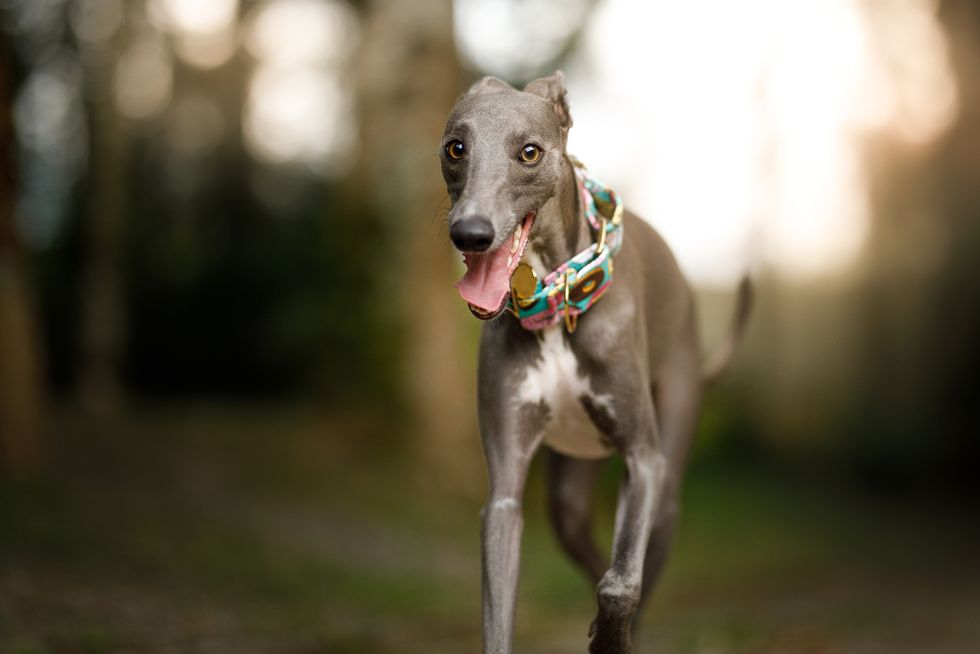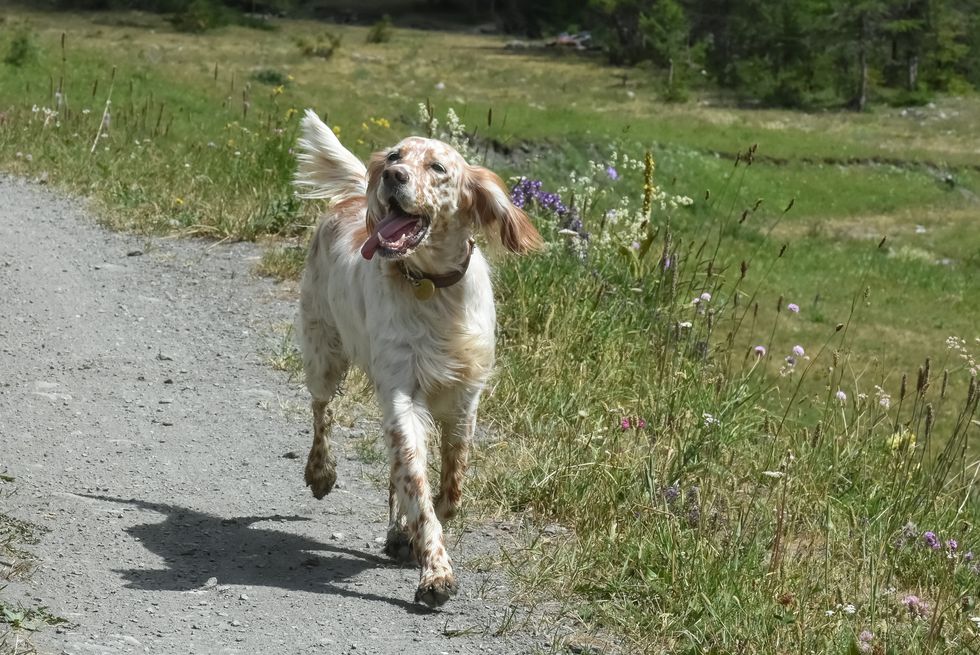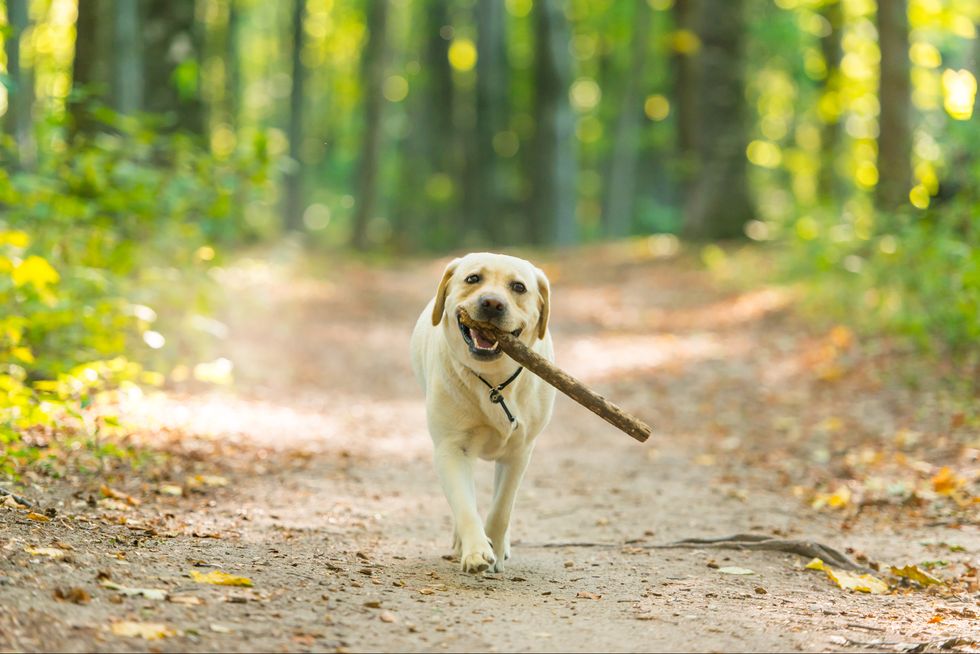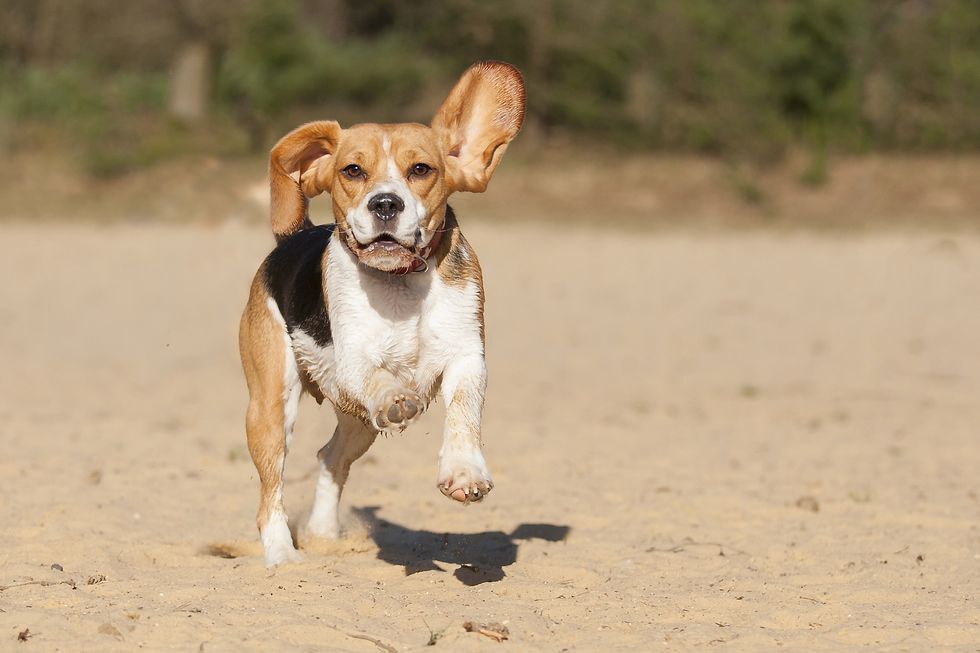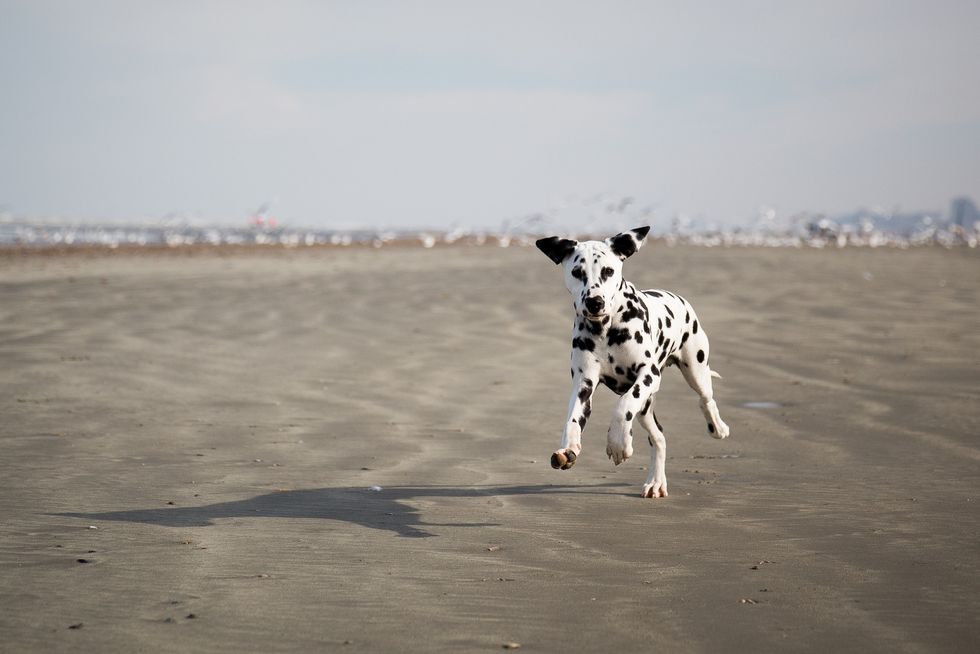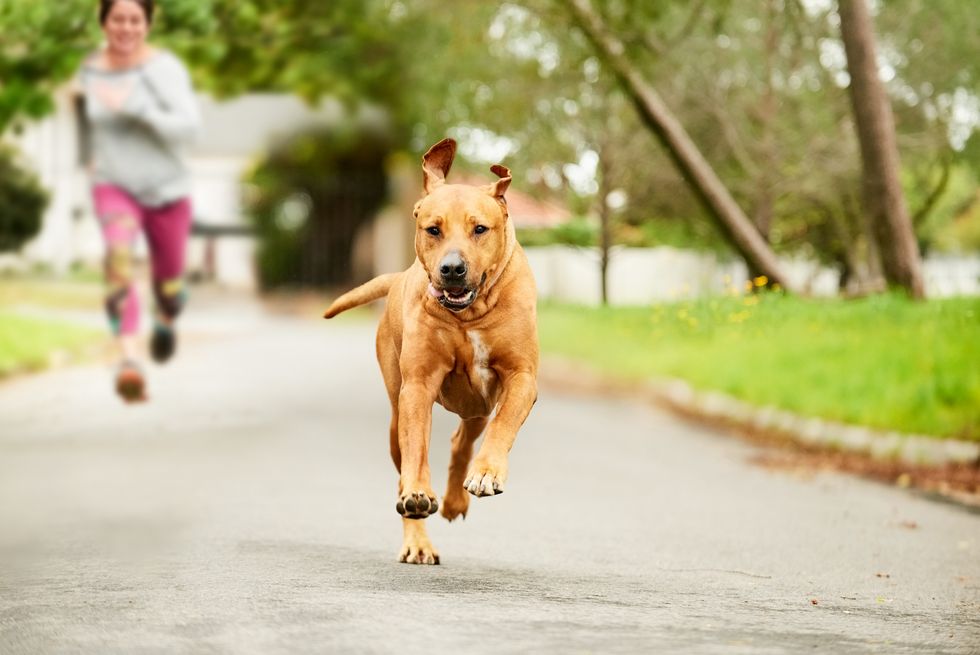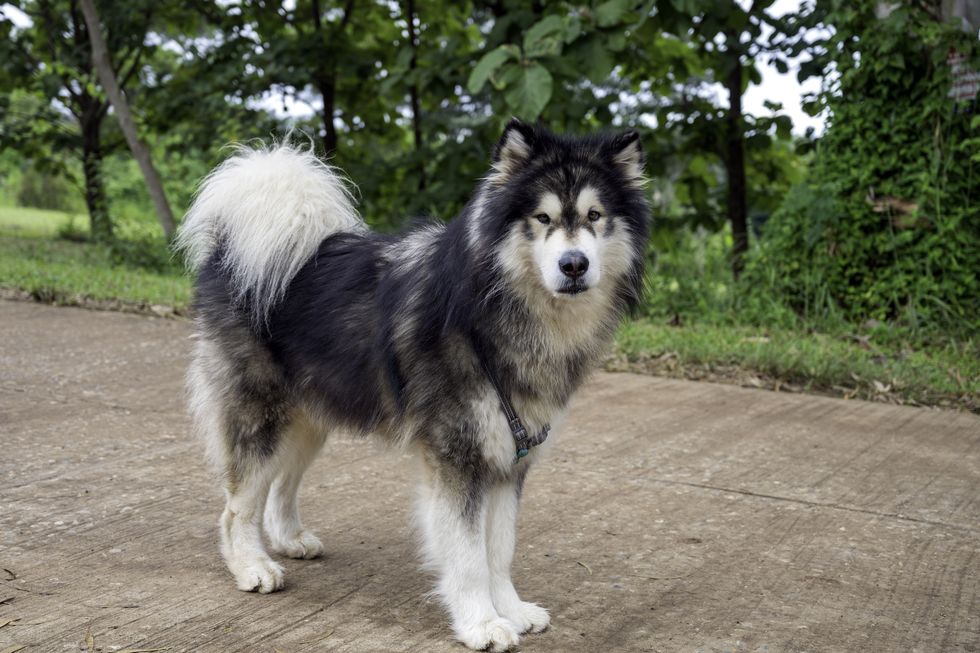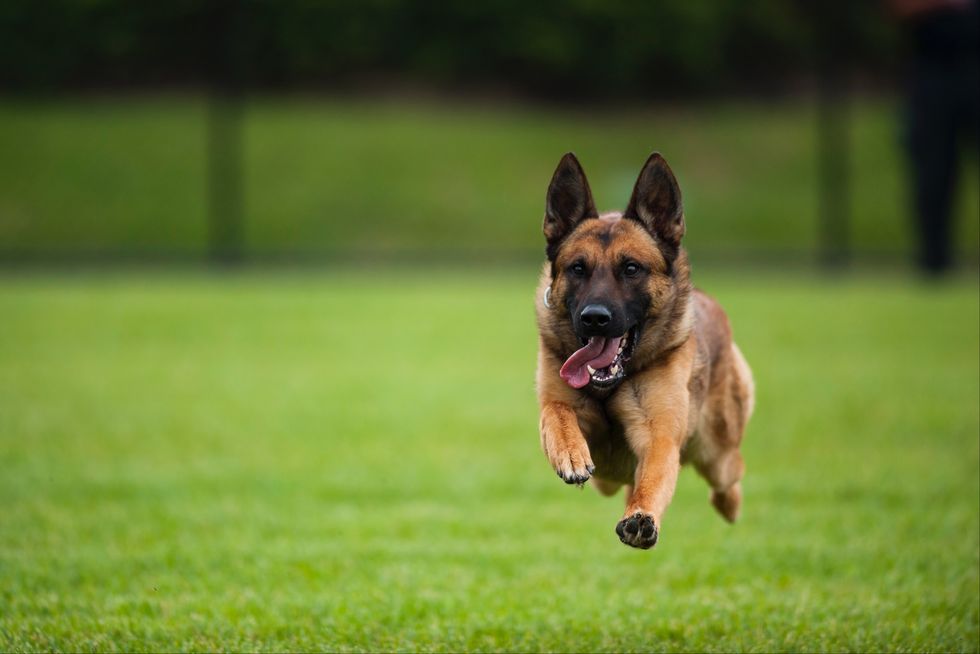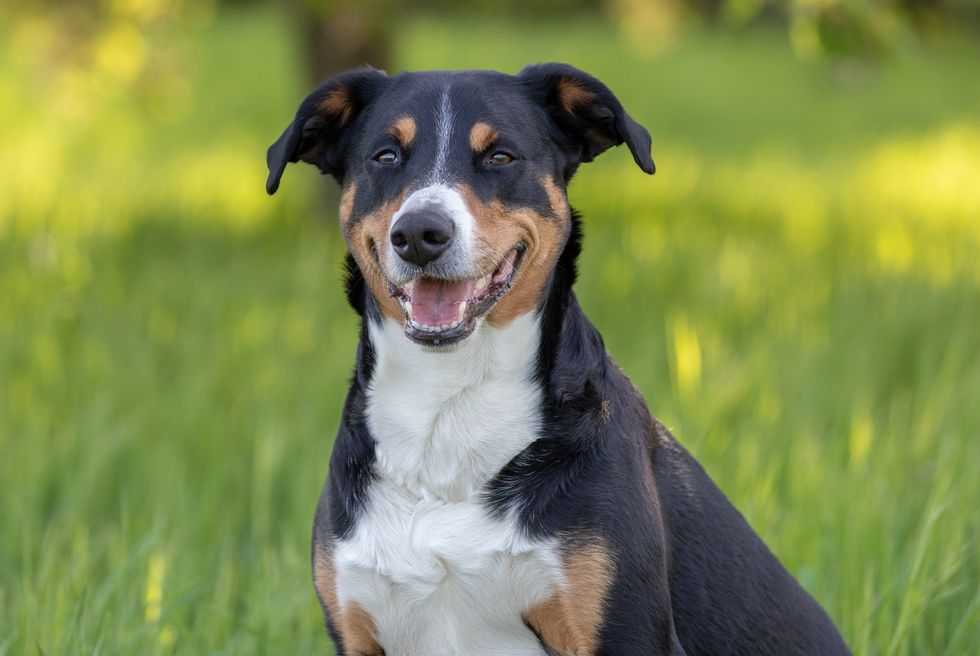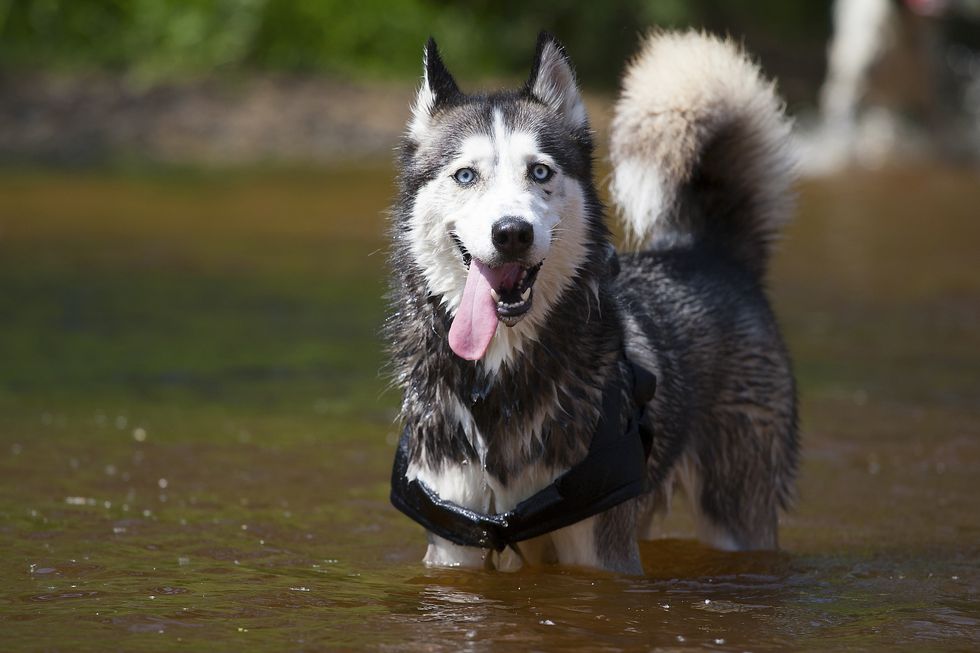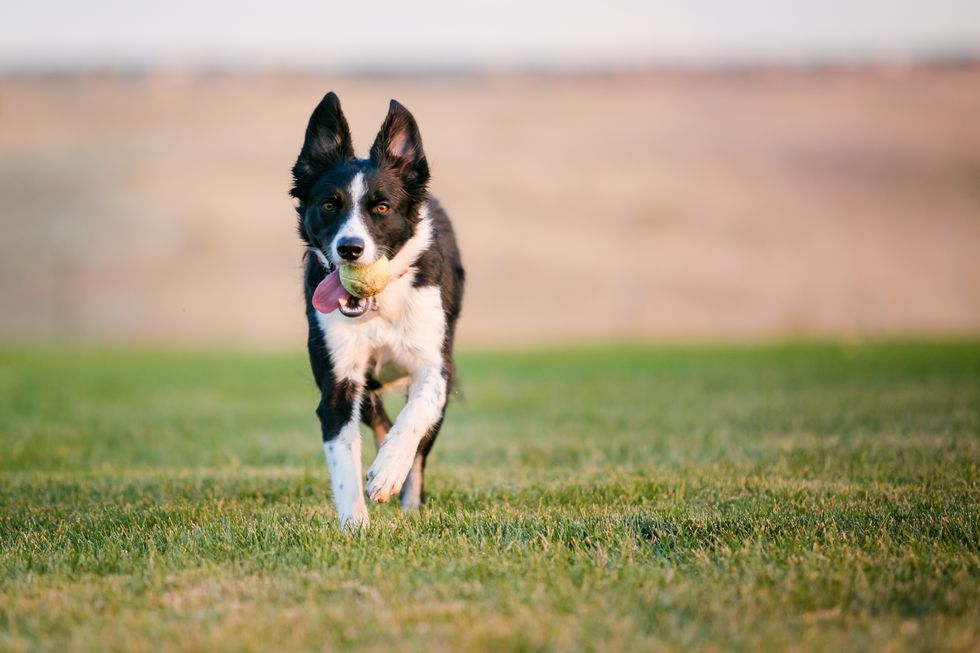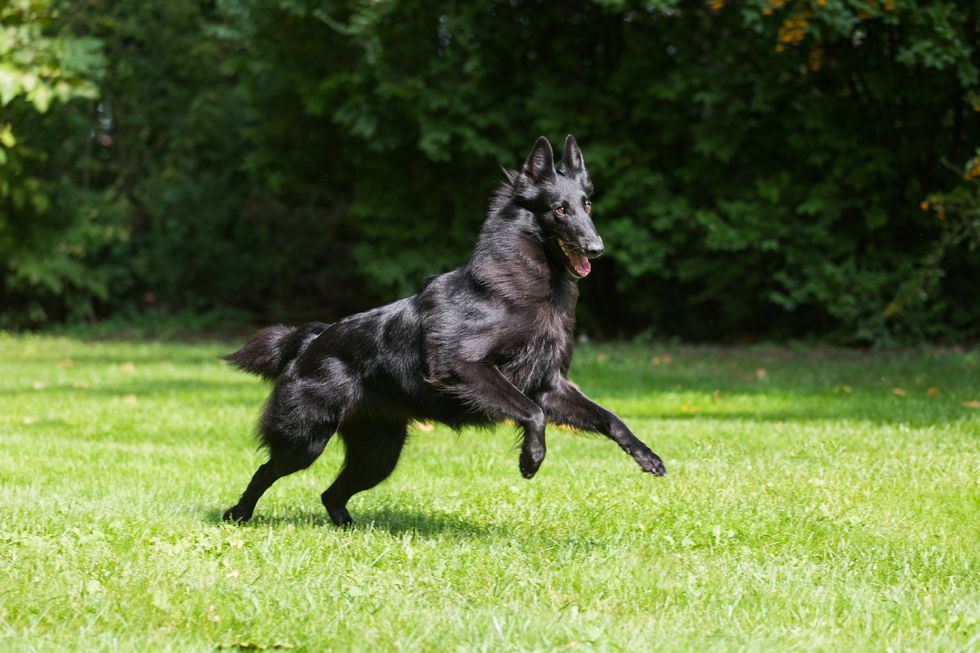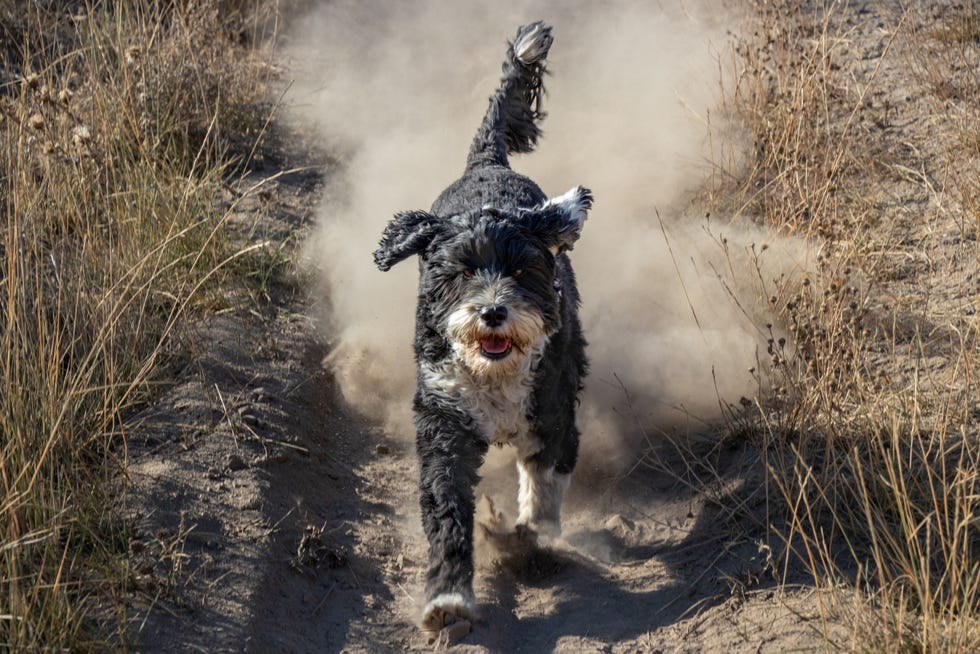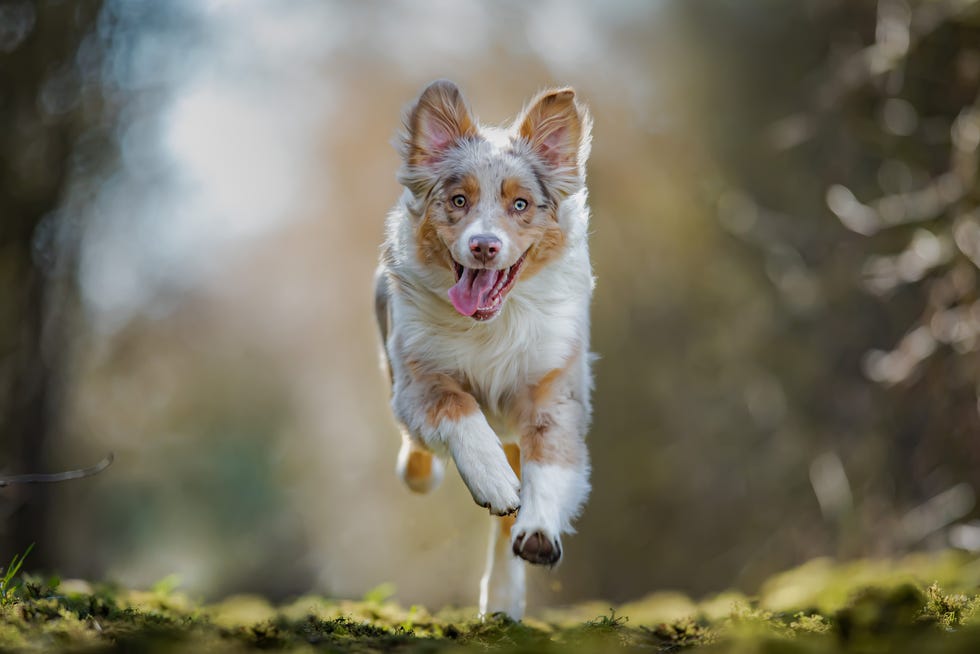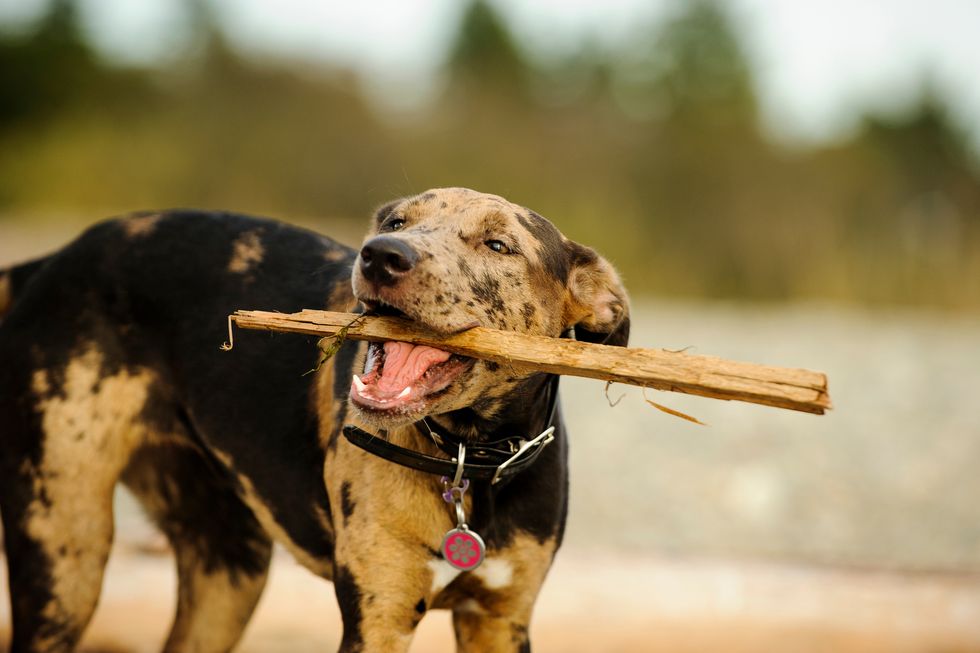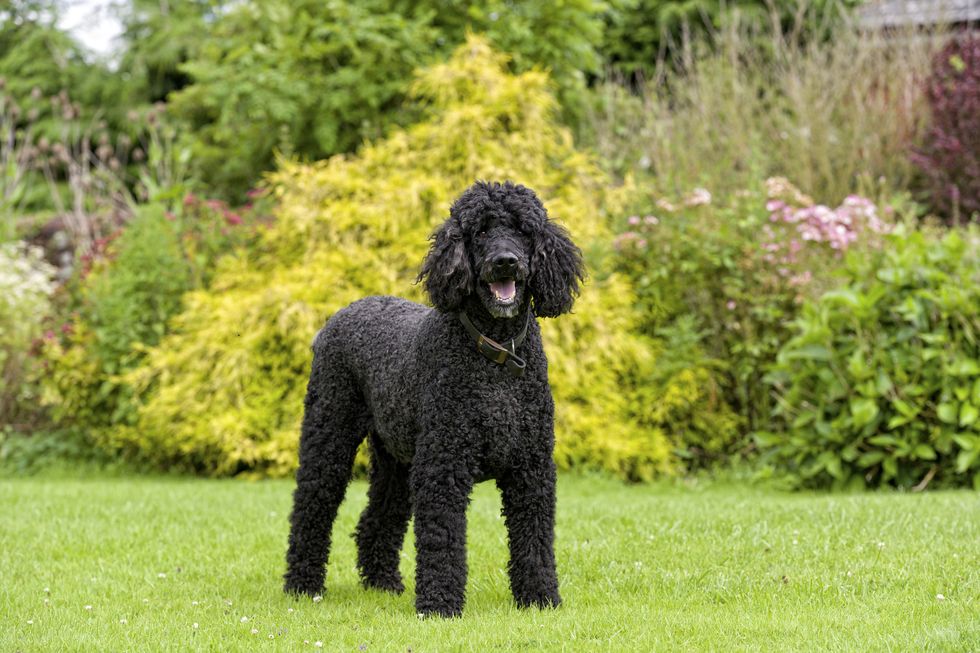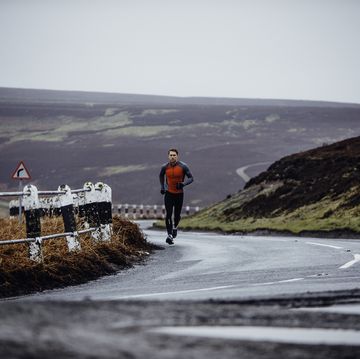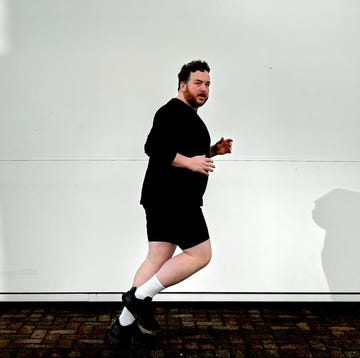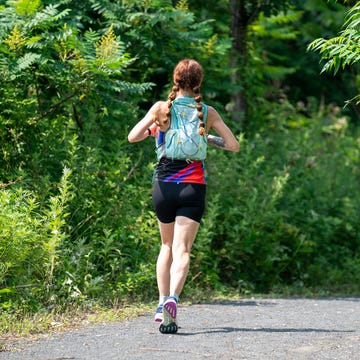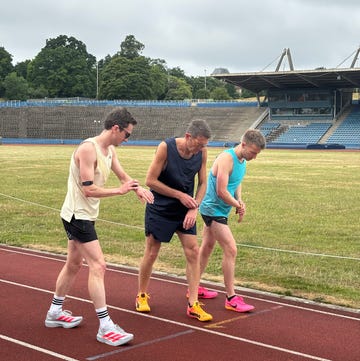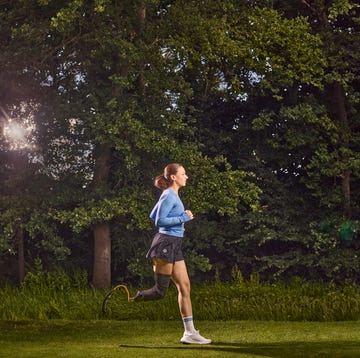Perhaps you’ve hit a standoff – you want to clock a run, but your dog, pawing at the front door, is insisting that you take it for walkies instead. Or perhaps you’re looking for a loyal new running partner, who can bring boundless energy and enthusiasm to every stride. Either way, running with a dog could be your gateway to a more wholesome running experience, giving you and your canine companion, simultaneously, some all-important fresh air and exercise.
In fact, even the best run with dogs – and some take it very seriously. British athlete Ben Robinson is a multiple world champion in the sport of Canicross, where a runner and a dog, joined together by a waist harness, race a cross-country course as a team. Very much pulled along by his mutt, Robinson even holds the 5K Canicross world record of – wait for it – 11:56.
RW columnist Sophie Raworth also runs (and occasionally races Canicross) with her faithful dog Luna, while Olympic marathon runner Phil Sesemann, who is a repeat London Marathon contender, regularly banks big training sessions with his two dogs, Kipchoge and Haile.
What everyone's reading
As such, a dog really can be a runner’s best friend – in addition, of course, to their running shoes, watch, apparel and so on. But which dog breeds suit your running needs? Here, we’ve rounded up the types of dogs that are best built to join you on your runs, whether you want to jog a couple of miles or go fast over a lot of ground.
Tips for running with a dog
Before you take out a dog for its first run, it’s important to take a few precautions to make sure that both you and your canine feel comfortable and safe.
As noted by the Blue Cross, a charity for pets in the UK, make sure that you have the right equipment and speak to your vet first to check that your dog has the all-clear to run – especially if it is an older dog with any existing health conditions. Likewise, if you have a younger dog, wait for it to be fully grown before you start running together to avoid bone issues and other health complications later in the dog’s life.
If you’re both good to go, make sure that you leave at least a two-hour gap between your dog’s (and your own) previous meal and your run to avoid any gastrointestinal upset. Set off at a comfortable pace that allows you to communicate clearly with your dog and ensure that it stays close and doesn’t pull on the lead, if you’re using one. Again, as highlighted by the Blue Cross, dogs can’t benefit from the cushioned running shoes that we can wear, so be wary of the terrain that you run upon as well. Too much abrasive tarmac could lead to impact injuries for your dog, while softer trails and grass are kinder on the joints and paws.
What’s more, if your dog needs a toilet stop mid-run, be sure to clean up after them. It’s the civil thing to do and other people who follow in your path will thank you!
How far should you run with a dog?
Start by running around two to three miles with your dog at a time. Then, once you’ve completed a week or so of this distance together at an easy pace, try adding half a mile or 10 minutes to the length of your run. If your dog is happy with this increase, try to pick up the pace or add an extra run at the weekends. After a month of training together, and if you see that your dog can easily handle the base mileage, start aiming for a daily running target of four or five miles.
Bear in mind that most dog trainers strongly recommend at least one day – if not two days – of rest for both you and your dog a week.
It’s also crucial that you pay attention to how you dog responds to your running plan. If they are struggling to keep up, refusing to move or showing any other signs of distress, stop running straight away and give your dog a chance to rest or play. Not all dogs respond well to running beside you, so don’t force your pooch to run if it’s unenjoyable to them or causing them even the slightest upset.
Find your ideal running dog
With help from professional dog trainer JT Clough, professional dog runner Bryan Barrera, certified animal behaviourist Karen London and the American Kennel Club, we’ve identified the 20 dog breeds that are best suited to running.
Remember, though, that there will always be variation within breeds and a mixed-breed dog at your local animal shelter could be the perfect running partner for you. Besides, there are many rescue dogs who are in search of a loving home.
Weimaraner
Aptitudes
- Long, steady runs
- Running fast
- Running on trails
The medium, well-muscled build of a Weimaraner makes this energetic dog a great running companion. ‘They need an extraordinary amount of exercise and mental stimulation,’ says Clough, who owns dog coaching practice Maui Dog Remedies. ‘They also want to be right by their person, making the Weimaraner an excellent running partner.’
German Shorthaired Pointer
Aptitudes
- Long, steady runs
- Running fast
- Running on trails
This medium-size hunting dog is smart and willing to tag along on just about any run because of its high energy. ‘They are quick, durable runners that have a good top speed, as well as the build to sustain high mileages,’ says Barrera, from the US, who founded of D.C. Dog Runner.
Vizsla
Aptitudes
- Long, steady runs
- Running fast
- Running on trails
- Running in the heat
You’d better like getting out the door, because Clough says that this breed is usually a ball of energy that needs at least an hour of exercise each day. ‘I’d say, pound for pound, that this is the best running dog for any type of running,’ adds Barrera. ‘They are so versatile. They can cover a tonne of ground because of their long gait and can cruise on autopilot as long as you want.’
Parson Russell Terrier
Aptitudes
- Long, steady runs
This smaller dog, formerly known as the Jack Russell, loves playing and tends to be very eager and active. ‘They are also hunters, so make sure to spend some time training this breed to run beside you and avoid getting sidetracked looking for prey,’ says Clough.
Greyhound
Aptitudes
- Brisk, short runs
- Running fast
Although greyhounds have been known for their top-speed work on the racing track, in regular life they are independent and gentle. They’ll love to run with you – just not for distance. ‘Some are really only sprinters, so don’t expect all greyhounds to log a lot of mileage with you,’ says London, who trains and runs with dogs in the US state of Arizona.
Pit Bull
Aptitudes
- Brisk, short runs
Usually intelligent and often misunderstood, the Pit Bull can be a pleasure once it learns to stop pulling on a lead. (Pit Bull is common name for breeds like the American Staffordshire Terrier, pictured, as well as Staffordshire Bull Terrier.) ‘They are low to the ground and really excel at the shorter distance,’ says Barrera. ‘It’s one of the rare breeds that looks like it’s working as hard as you when running.’
English Setter
Aptitudes
- Brisk, short runs
The American Kennel Club calls the English setter a ‘symmetrical gun dog suggesting the ideal blend of strength, (and) stamina’. It’s also a fairly active breed and enjoys playing.
Golden and Labrador Retriever
Aptitudes
- Brisk, short runs
- Long, slow runs
Yes, we know they are different breeds, but they generally have similar running personalities. These friendly dogs usually get along with everybody and have big bodies that can go the distance. ‘Easy to train and extremely loyal, Golden and Labrador Retrievers will make great running partners at just about any distance,’ says Clough.
Beagle
Aptitudes
- Brisk, short runs
Don’t assume that all Beagles are like Snoopy, chilling on a kennel roof. This breed has a mind for sprinting over slogging and is very active and quick, requiring plenty of exercise. As London notes, some Beagles have a hunter’s mentality and can run a little longer.
Dalmatian
Aptitudes
- Long, steady runs
London says that Dalmatians love exercise and are some of the best dogs for long-distance running. Barrera adds you should be mindful of how they run. ‘They kind of pound the pavement due to their size, so, if possible, I’d stick to the soft trails with this breed,’ he says.
Rhodesian Ridgeback
Aptitudes
- Running in the heat
- Long, steady runs
This is a strong breed that needs its exercise. ‘This breed is good in the heat, so it can be a great running partner in warmer climates,’ says Clough. Barrera adds that they have a natural gait and strong internal engine, making them perfect long-distance running partners.
Fox Terrier
Aptitudes
- Running in the heat
This breed is friendly, energetic and lively. The American Kennel Club suggests early training, since Fox Terriers ‘can eagerly run off to follow any adventure’ if they’re not on a lead.
Malamute
Aptitudes
- Running in the cold
A thick coat and stocky build makes this an ideal breed for cold-weather runners. Built to be a sled dog, these dogs crave work and love exercise.
German Shepherd
Aptitudes
- Running in the cold
Barrera has run with three run-loving German Shepherds, all with varying personalities. ‘Enthusiasm, intelligence and the need for vigorous exercise make this breed the perfect running partner,’ adds Clough.
Swiss Mountain Dog
Aptitudes
- Running in the cold
These big dogs boast even temperaments, making them great family dogs. Mellow at home, they were also built to work on farms, so they enjoy a short jog to get in some exercise.
Siberian Husky
Aptitudes
- Running in the cold
Quick and light on its feet, this working dog breed usually enjoys any activity. ‘These are very athletic dogs that definitely do best in the colder air – but they can hold their own in the spring and autumn as well,’ says Barerra.
Border Collie
Aptitudes
- Long, steady runs
- Running in the cold (but not the snow)
According to Barerra, Border Collies are amazing athletes and very energetic. ‘Competent, well-trained Border Collies are a joy to run with and can dart and duck and move with the best of them.’ London adds that their coats help them in chilly conditions – but dense snow can get trapped in their fur, making them too cold.
Belgian Sheepdog
Aptitudes
- Brisk, short runs
This breed generally has lots of energy to burn on many types of runs. ‘These dogs are highly trainable, but make sure to address nipping at the start as it is a byproduct of their innate herding,’ notes Clough.
Pharaoh Hound
Aptitudes
- Brisk, short runs
Although they don’t need to pound out several miles a day, Pharaoh Hounds require the right amount of exercise – and a run certainly fits the bill. ‘This breed is great,’ says London. ‘I can’t ever let these dogs set the pace, because they always want to run faster.’ This is a hunting dog, so be aware that it may want to chase after small animals until it’s trained.
Portuguese Water Dog
Aptitudes
- Trails with obstacles
- Long, steady runs
The American Kennel Club says that these dogs are usually affectionate, adventurous and energetic. ‘They are working dogs and basically treat the run as a job by putting their heads down and hammering out miles,’ says Barrera. As the name suggests, they also don’t mind a little dampness under their paws.
Australian Shepherd
Aptitudes
- Trails with obstacles
‘The one I run with is the quickest, most agile, sure footed runner I have in my stable of runners,’ notes Barrera. Very energetic, these dogs often move around all day if you let them.
Catahoula
Aptitudes
- Long, steady runs
The official dog of the US state of Louisiana, the Catahoula Leopard Dog has a strong work ethic. Plus, once it gets the right amount of exercise, the Catahoula is a calm companion.
Standard Poodle
Aptitudes
- Long, steady runs
This breed has a game-playing attitude, says Clough, which can be a good diversion if your own run feels lacking. ‘If you are looking for some fun on a run, the attitude of a Standard Poodle will do the trick,’ she says. Although training on a lead is a must, they are also good in mucky, trail-like environments.
Information from contributing writer Christie Aschwanden was used in this article.

